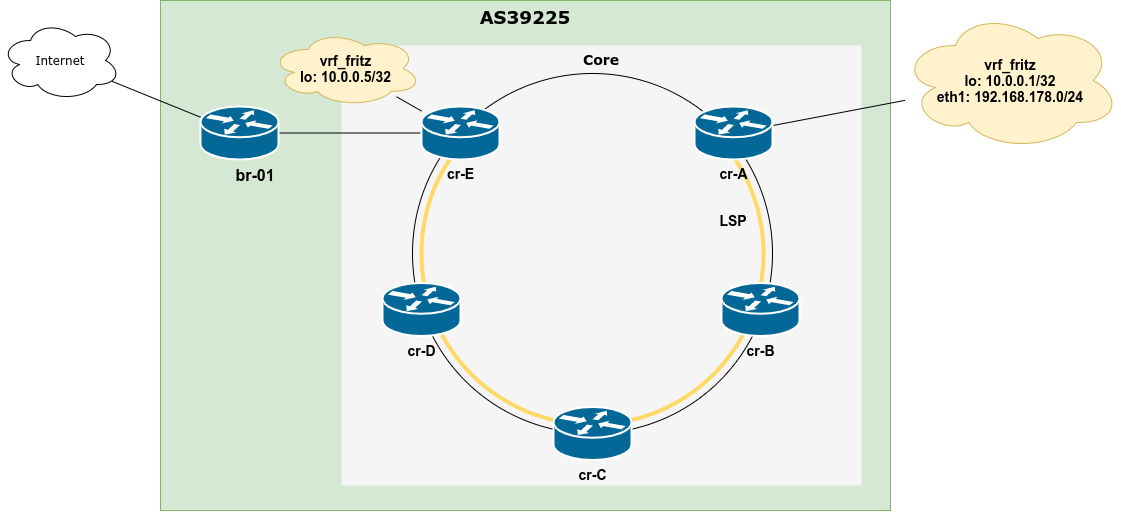At DENOG13 I held a workshop Fun with PBR, VRFs and NetNS on Linux (in German) where I showcased forwarding IP packets within a VRF via static MPLS LSPs. I’ve been asked to publish the configuration for this lab, so here we are 🙂
Consider the following topology consisting of a core ring build with 5 routers, a border router (br-01) connected to core router E (cr-E) as well as to the Internet. All routers take part of OSPF area 0 and run iBGP with br-01 as the route reflector which is providing a default route. This is the same setup used for most of the FrOSCon Network Track.
